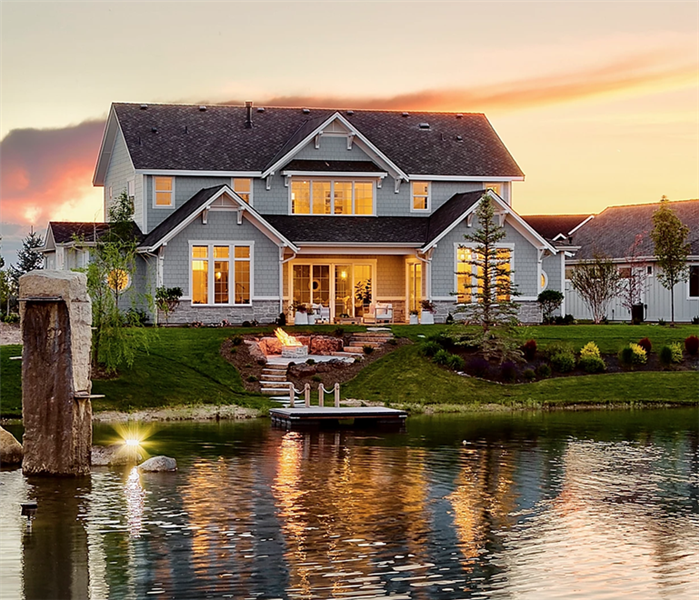Residential Landscaping Tips for Stormwater
1/13/2020 (Permalink)
Seasonal storms do not have to ruin your landscaping and create harmful runoff. Seasonal rain showers wash away soil, rocks, mulch, plants, force trees to fall down, allow large pools of water to build up causing mud pits or even worse cause damage to your homes foundation. Here are some tips to allow your landscaping to be functional but also allow you to keep fantastic curb appeal.
Permeable Pavers
Residential communities often struggle to control the environmental effects of runoff. This becomes an issue when parking lots, driveways, and sidewalks prevent natural water absorption.
Installing permeable pavers offer a way to manage stormwater with your driveway, patio, and other hard surfaces. The stormwater flows through the paver into the soil, rather than running off into the street.
Gravel and Stone Beds
Gravel areas and stone beds provide a porous area that stormwater can quickly filter through to be absorbed into the soil below. These beds are often used in swales, and they’re popular because they have a natural look. Plus, they’re great options for climates where grass doesn’t grow easily.
Berms and Swales
First, consider the lay of your land. Determine where the water currently flows on the property and decide if that location needs to be diverted. If the water naturally flows towards a building, you need to redirect it away from the foundation.
A berm is an excellent solution to this problem. Berms are slightly raised areas of land that can help change the direction the water flows. By combining berms and swales, water can be absorbed in your yard or easily flow through to a catchment designed to allow evaporation while providing a source of water for your plants.
Retaining Walls
Keep in mind the slope of the land while designing your stormwater-friendly landscape. If your property slopes toward any buildings, you will want to divert that water. A tiered retaining wall with stone, shrubs, plants and grass will slow the flow of water down a steep slope. This reduces soil erosion and runoff while the plants absorb and use the excess water.
Rain Garden
If a portion of your yard is lower than the rest and often experiences pooling of stormwater. They also add to a yard’s aesthetic. First, identify a low-lying area and grow a mixture of plants that require a lot of water. Some examples are day lilies, bee balm, and butterfly weed.
Tips for Stormwater
Your landscape plan will depend on your climate, the amount of precipitation you get, and the size of your yard.For example, you may not want to plant a rain garden if you live in a place that is dry for many months and then sees severe storms. Instead, you may opt for permeable pavers or stone beds.
If you have any damage to your home or place of business due to stormwater, call the professionals at SERVPRO of San Luis Obispo at (805)541-1271 "Like it never even happened."






 24/7 Emergency Service
24/7 Emergency Service
